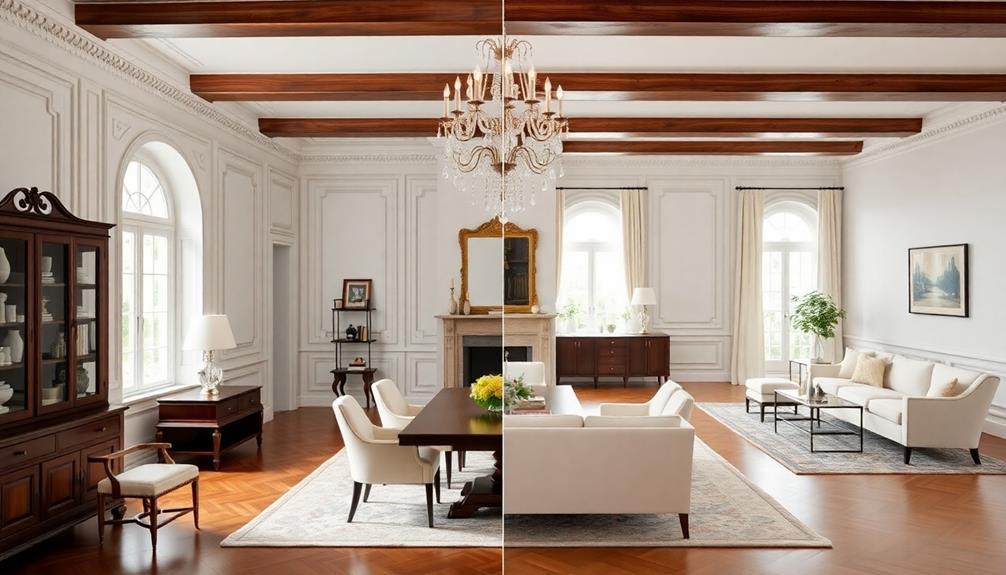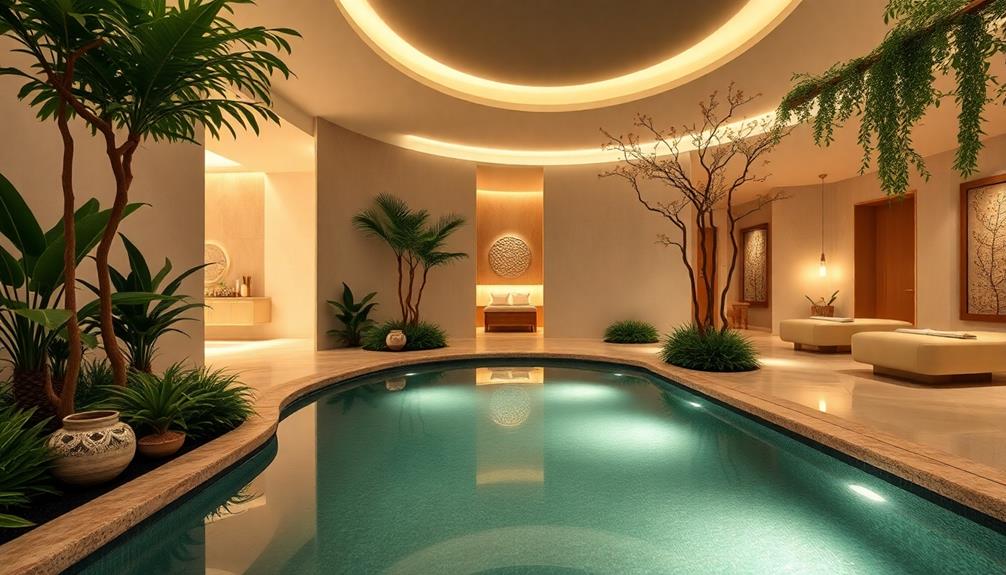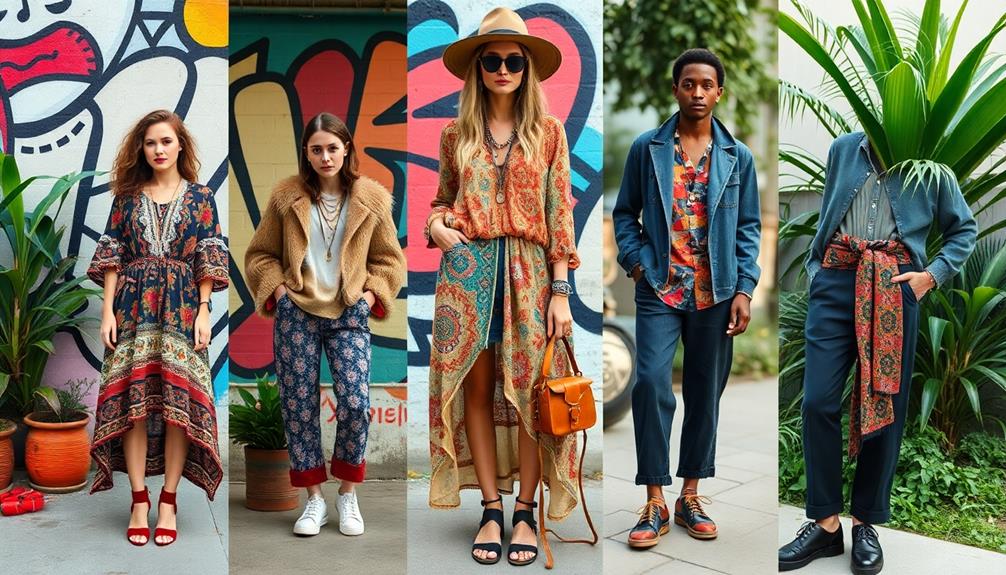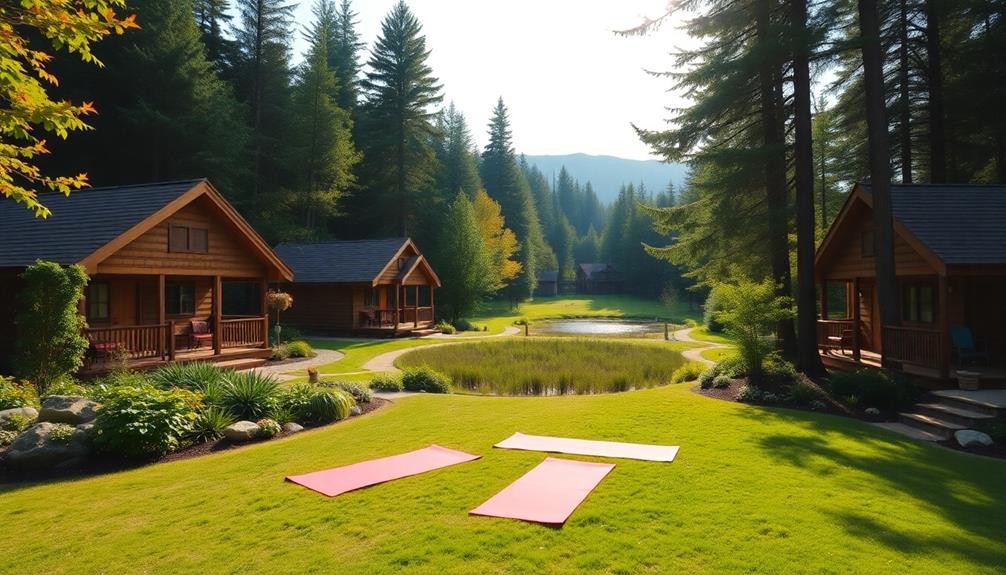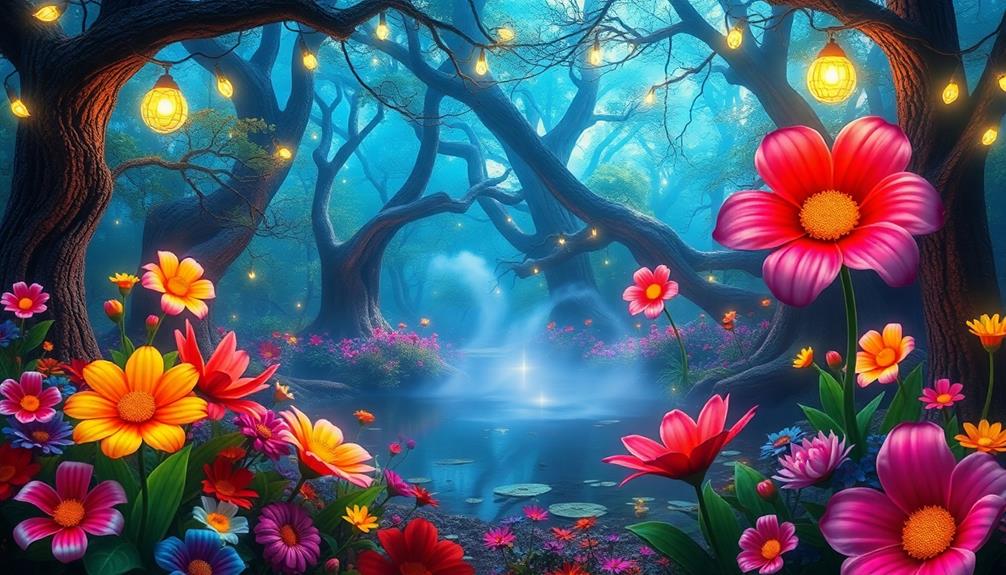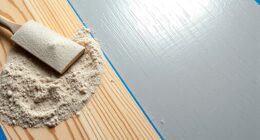When you're faced with the classic versus modern interior design showdown, each style has its unique charm. Classic design exudes elegance with rich colors, luxurious fabrics, and ornate details, creating a warm, sophisticated atmosphere. In contrast, modern design embraces simplicity with clean lines, neutral tones, and functional elements, promoting a serene vibe. Modern spaces often incorporate smart technology and multifunctional furniture for efficiency. While classic designs evoke nostalgia, modern aesthetics prioritize comfort and calmness. Each choice makes a statement, reflecting your personality and lifestyle. Explore further to uncover what fits your vision best!
Key Takeaways
- Classic design features rich colors and luxurious materials, creating an opulent and sophisticated ambiance compared to modern design's neutral tones and simplicity.
- Modern design emphasizes functionality with adaptable furniture and smart technology, while classic design focuses on elegance and elaborate decor.
- Key materials in classic design include oak and marble, whereas modern design integrates natural elements like wood and stone for a warm yet minimalist feel.
- Classic interiors evoke nostalgia through vibrant hues and ornate details, while modern spaces promote tranquility with soft, muted color palettes.
- Lighting in classic design often includes chandeliers and ornate fixtures, contrasting with modern design's emphasis on clean lines and functional lighting solutions.
Characteristics of Classic Design
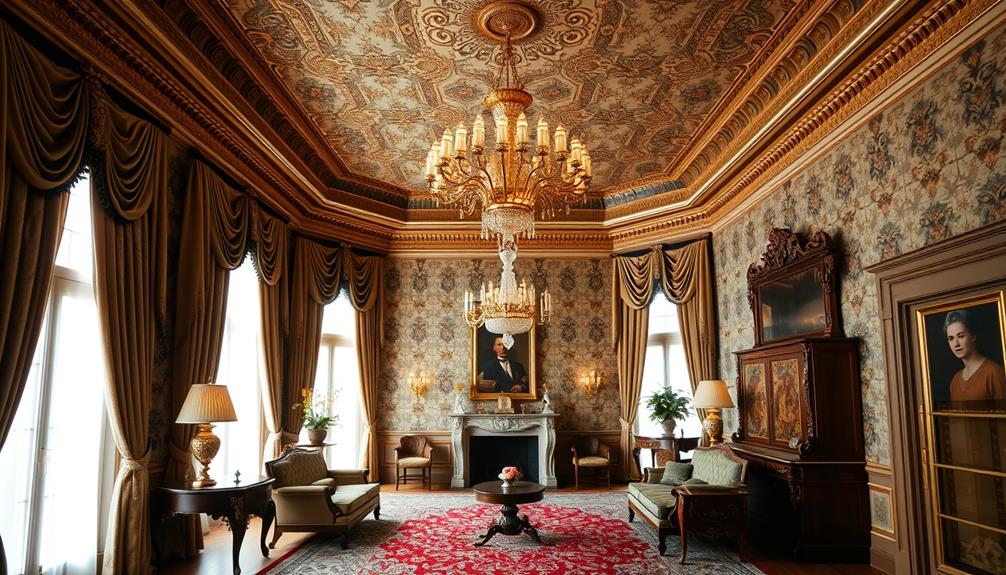
When you step into a classic interior design space, you're instantly surrounded by elegance and sophistication that harks back to the 18th and 19th centuries. Rich colors like deep reds, forest greens, and luxurious yellows create a warm and inviting atmosphere.
The careful selection of materials and colors reflects a deep understanding of mood boards essential for visualizing design concepts. You'll notice prestigious materials such as oak, mahogany, and marble, accented with gold finishes that add a touch of opulence.
Elaborate lighting fixtures, including stunning chandeliers and ornate sconces, illuminate the space beautifully. The emphasis on luxurious fabrics like cotton, leather, and velvet not only enhances comfort but also elevates the overall aesthetic.
This careful attention to detail and quality makes classic design truly timeless, ensuring that every element contributes to a cohesive and refined environment.
Key Features of Modern Design
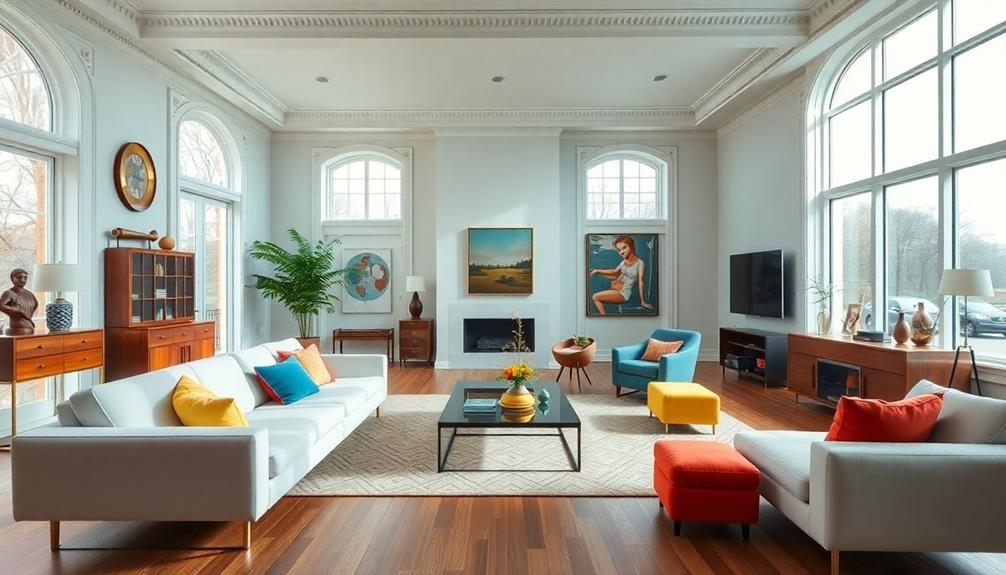
Simplicity defines the essence of modern interior design, creating spaces that feel both functional and inviting.
You'll notice clean lines and minimalist aesthetics that prioritize practicality. The emphasis on natural materials like wood and stone creates a warm atmosphere, echoing some elements of modern farmhouse decor trends.
Neutral tones dominate the color palette, fostering a serene environment free from distractions. When selecting furniture, you're encouraged to choose versatile pieces that adapt to your needs while maximizing space efficiency.
The use of mixed materials—think glass, metal, and wood—adds a contemporary touch, seamlessly blending different textures. Architectural elements are designed with purpose, ensuring every detail serves a function.
Minimalism in Interior Spaces
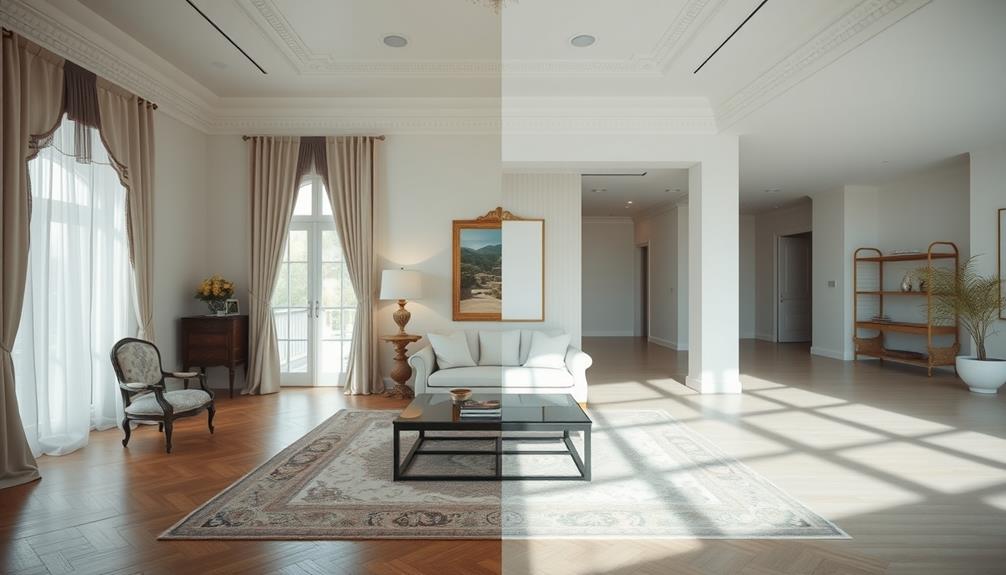
Modern design sets the stage for minimalism, where every element serves a purpose without unnecessary embellishments.
This approach transforms your space into a serene environment that feels both spacious and inviting. By embracing minimalism, you can create an aesthetic that promotes tranquility and clarity, aligning with the principles of efficient resource use in design. Incorporating natural elements such as wood and bamboo can further enhance the calming atmosphere. To add warmth and cultural richness, consider incorporating Indonesian textiles into your design, such as batik or ikat patterns. These textiles not only bring visual interest but also add a touch of global influence to your space.
Here are three key principles to contemplate:
- Simplicity: Use clean lines and a clutter-free layout to enhance openness.
- Neutral Colors: Opt for soft, muted tones that foster a calm atmosphere.
- Functionality: Choose furniture that's practical and versatile, ensuring it meets your needs without overwhelming the space.
Functionality in Modern Living
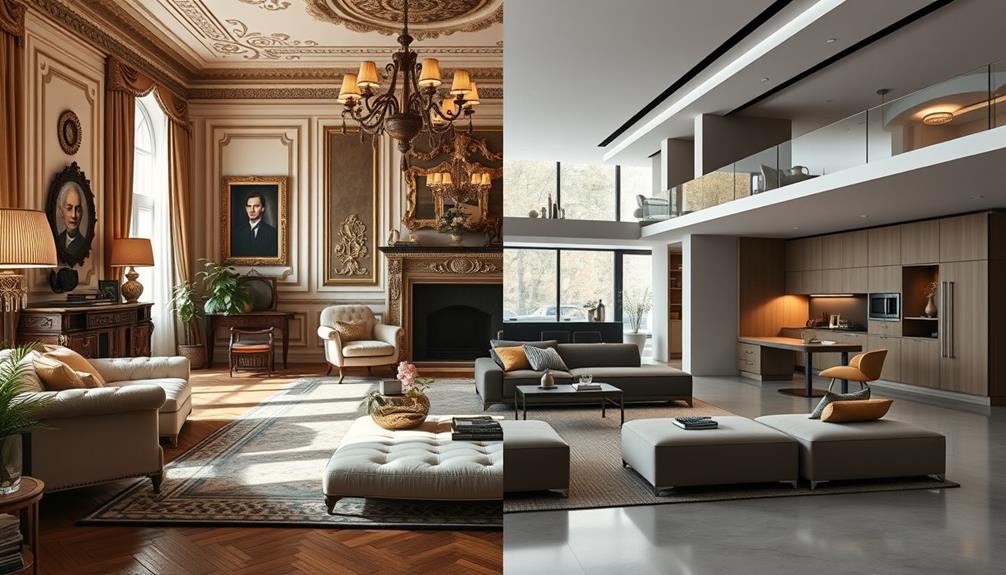
In today's fast-paced world, functionality in modern living spaces is more important than ever. You need environments that adapt to your lifestyle, maximizing comfort and efficiency. Modern design emphasizes practicality, featuring versatile furniture and smart technology that support your daily routines.
Here's a quick comparison of functional elements you might find in modern living:
| Element | Purpose | Benefit |
|---|---|---|
| Multi-functional Sofa | Serves as seating & bed | Saves space |
| Modular Shelving | Customizable storage solutions | Organizes without clutter |
| Smart Lighting | Adjusts to your needs | Enhances mood & energy savings |
| Extendable Dining Table | Accommodates guests | Flexible dining arrangements |
| Built-in Appliances | Streamlined kitchen design | Increases efficiency |
This approach guarantees your space is not just beautiful but also practical for everyday life.
Color Choices Compared
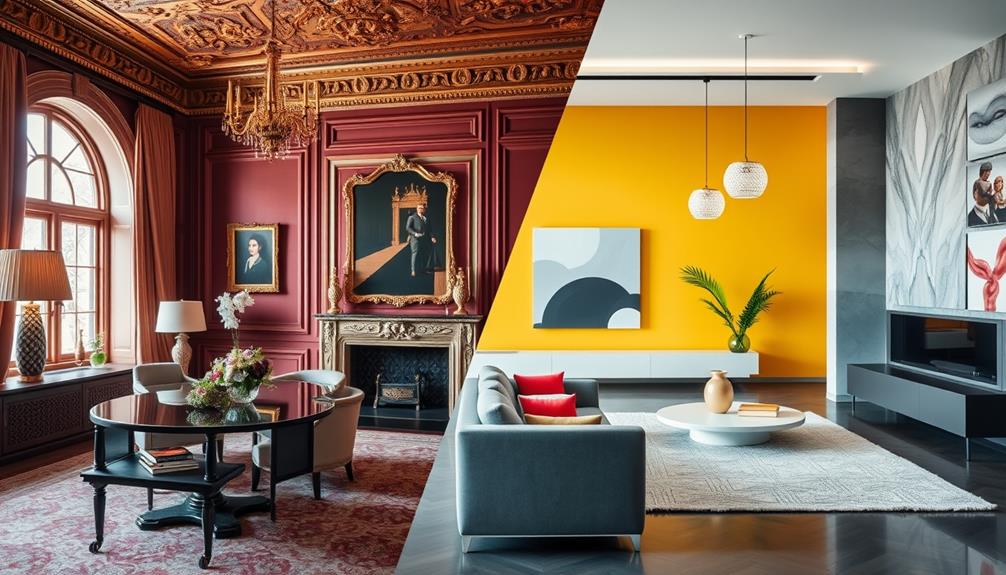
Color plays a pivotal role in defining the atmosphere of a space, and when comparing classic and modern interior design, the differences are striking.
In classic design, you'll find rich, vibrant colors like deep reds and greens that evoke warmth and opulence. Modern design, on the other hand, embraces neutral tones, creating a serene and minimalist aesthetic.
Here are some key contrasts to take into account:
- Classic Colors: Bold and luxurious hues enhance depth and character.
- Modern Colors: Soft, muted palettes promote tranquility and simplicity.
- Emotional Impact: Classic colors evoke nostalgia, while modern colors foster calmness.
Ultimately, your color choices reflect your personal style and the atmosphere you wish to create in your space.
Frequently Asked Questions
How Can I Blend Classic and Modern Design Elements Effectively?
To blend classic and modern design effectively, you can mix rich textures with minimalist furniture, incorporate vibrant artwork in neutral spaces, and use statement lighting to create a harmonious balance that reflects both styles beautifully.
What Are Some Common Mistakes in Classic Interior Design?
You might overlook scale, using oversized furniture in small spaces. Ignoring color balance can make a room feel heavy. Also, mixing too many styles can disrupt harmony, so aim for cohesive elements instead.
How Do I Choose Between Classic and Modern for My Space?
So, you think picking a style's like choosing between cake and broccoli? Focus on your vibe! If you crave warmth and history, go classic. For simplicity and a clean slate, modern's your jam.
Can Classic Design Work in Small Apartments?
Yes, classic design can absolutely work in small apartments. You can incorporate elegant touches, rich colors, and sophisticated materials without overwhelming the space. Just focus on key pieces that enhance your apartment's charm and functionality.
What Are the Maintenance Differences Between Classic and Modern Interiors?
When it comes to maintenance, you're often caught between a rock and a hard place. Classic interiors require more upkeep due to intricate details, while modern designs typically demand less, focusing on simplicity and practicality.
Conclusion
In choosing between classic and modern design, you're not just selecting a style; you're defining a lifestyle. Classic design offers warmth and opulence, inviting you to indulge in tradition, while modern design provides simplicity and functionality, encouraging you to embrace the present. Both styles reflect your personality, showcasing your taste and values. Ultimately, whether you lean towards the elegance of classic or the sleekness of modern, what matters most is creating a space that truly feels like home.
